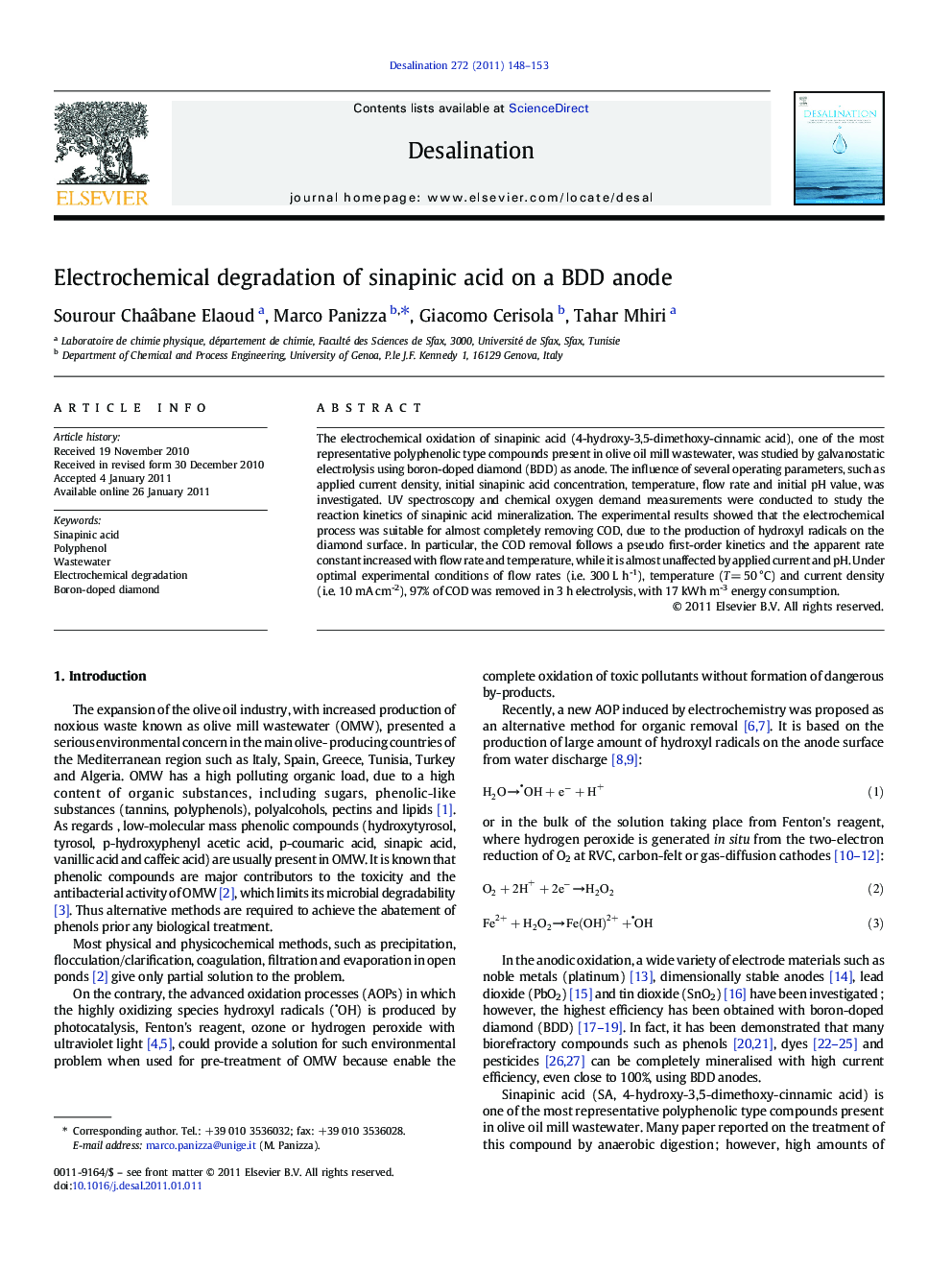| Article ID | Journal | Published Year | Pages | File Type |
|---|---|---|---|---|
| 625217 | Desalination | 2011 | 6 Pages |
The electrochemical oxidation of sinapinic acid (4-hydroxy-3,5-dimethoxy-cinnamic acid), one of the most representative polyphenolic type compounds present in olive oil mill wastewater, was studied by galvanostatic electrolysis using boron-doped diamond (BDD) as anode. The influence of several operating parameters, such as applied current density, initial sinapinic acid concentration, temperature, flow rate and initial pH value, was investigated. UV spectroscopy and chemical oxygen demand measurements were conducted to study the reaction kinetics of sinapinic acid mineralization. The experimental results showed that the electrochemical process was suitable for almost completely removing COD, due to the production of hydroxyl radicals on the diamond surface. In particular, the COD removal follows a pseudo first-order kinetics and the apparent rate constant increased with flow rate and temperature, while it is almost unaffected by applied current and pH. Under optimal experimental conditions of flow rates (i.e. 300 L h1), temperature (T = 50 °C) and current density (i.e. 10 mA cm2), 97% of COD was removed in 3 h electrolysis, with 17 kWh m3 energy consumption.
Research Highlights► Electrochemical removal of sinapinic acid using a diamond anode. ► We studied the influence of the main operating parameters affecting the treatment. ► Some economic considerations about energy consumption were presented.
